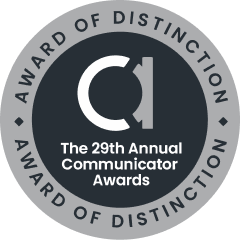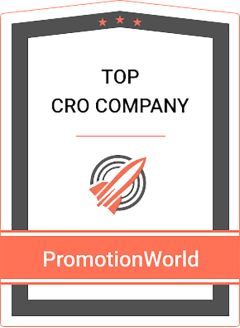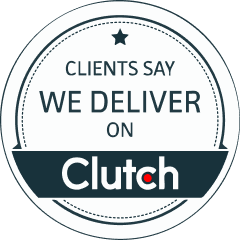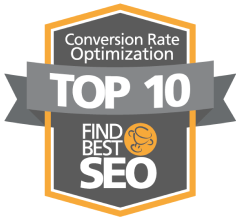Sarah Salimi | CMO of Spave | Startup Mentor for DivInc
We welcome Sarah Salimi, CMO of Spave and Startup Mentor for DivInc, to the podcast to discuss what it takes to build a high-performance marketing team and strategy for a startup company. Other topics covered include ways to continue your education as a marketer and the rise of the giving back culture in the marketing industry.
Transcripts
[Laura]: Hi everyone. And welcome back to the CMOs Guide to Everything. Today we have Sarah Salimi from Spave. A little bit of background on Sarah. She joined Spave in June of 2021. She’s a little new to the role, but in her role she’s responsible for developing and leading the digital strategy to surface operational efficiencies and breakthrough sales and marketing effectiveness. She works closely with the business units and system partners to shape the vision for future consumer and customer experiences. She comes to it from a great background in all kinds of expertise with data-driven growth, digital technology platforms, digital operations, as well as global strategy. She’s spearheaded a wide array of technology solutions for Fortune 500 clients. And she’s been actively involved in helping organizations in the retail, CPG, and industrial sectors become more competitive with digitalization. Sarah’s served on the board of the American Marketing Association and she’s a startup advisor and mentor. Her most recent engagement has been with DivInc Texas. DivInc bridges the gap between underrepresented entrepreneurs and the resources they need to build profitable high-growth companies. She’s an active advocate for inclusive entrepreneurship and financial literacy.
Welcome, Sarah.
[Sarah]: Thank you for having me, Laura.
[Laura]: So let’s start out a little bit, and why don’t you tell me about Spave. Give me a little bit of background about what the company does and maybe how the strategy’s changing a little bit.
[Sarah]: Sure. Spave is a three-in-one app that allows users to effortlessly save and give just by spending on everyday items as they normally would. With Spave you track and analyze your purchases. You can set goals and donate to causes that you truly care about. So we’re a FinTech, but we are rooted in good philanthropy and working with nonprofits.
I started with Spave in June, as you mentioned. And at that same time Spave was acquired by a subsidiary of MSU FCU. So the strategy shifted a little bit from focus on direct to the end user, to more of a B2B type engagement where we are now focusing on nonprofits and credit union partners.
So everything has shifted in the way that we’re more focused on making a larger impact with these partnerships and doing that by aligning with nonprofits and giving them the tools that they need to bring in consistent giving users and giving them data in order to continue their outreach and engagement with those users. And then on the credit union side, the credit unions are really rooted in community and giving their members the right tools to succeed financially. And we see that Spave fits into that because we are focused on financial wholeness, making sure that we’re offering those end users a full picture of not just what they’re spending, but other ways to use their money also to make a difference in the world, and to track that as well.
[Laura]: I think this is such a time timely offering because we’re seeing in the marketplace a care and concern about giving back in ways that really haven’t been in the past. I know even just anecdotal evidence in terms of our firm. We’ve had both clients and employees that have come on and said, “I want to work for your company because of your program for giving back.” So we have a program within our company where we sponsor a nonprofit for every quarter and give them free marketing services. And it was something that we started just because we felt like it was the right thing to do, not necessarily as a big campaign or whatever. And it’s just been surprising to me how much the market cares about that sort of thing, whereas that probably wasn’t true 10 years ago. So it’s definitely very timely, and I think relevant to this discussion, given that you’ve moved into the B2B space and this is a B2B podcast. So I’m excited to hear about those sort of things.
Let’s start with your team. So again this is a shift in strategy and you’re building the team. What kind of things do you look for when you’re starting from scratch, you’re going from the ground up?
[Sarah]: Right. So this is a startup. It is in the FinTech space, but when we’re looking to build a team, we’re looking at people that are highly adaptable and willing to learn, right? Things change on the fly. We need someone with an appetite to be able to take what they know, take what they’ve experienced through life, and then also learn from others and learn from outside sources. Whether it be a podcast like this or traditional education, whatever that may be, to grow their skill sets and help feed the business if you will. I look for people that are willing to work in a fast-paced environment; that are quick to pivot if need be. And then learn and grow, just adjust as they go along and really grow those individuals. It definitely helps if they’re willing to roll up their sleeves. But again, I think if you come into a position in the right mindset, you can be successful no matter what that position is. So really looking for people that are hungry and driven and want to do more.
[Laura]: Yeah. So you and I have talked a little bit before about hybrid roles. What do you think some of the benefits are? And I guess maybe for the benefit of our listeners, what do you consider a hybrid role?
[Sarah]: My role is very much a hybrid role. With hybrid, it means that you just have multiple roles and you pull from different types of experiences. So I touched on that a little bit in the last question, but I work heavily with sales, with marketing, with product, with customer success. I mean, we really have to pull from each area of the business in order to help grow the business and help serve that end user. So when we’re looking for individuals to work within the company or to work with us, we want to make sure that they have a vast experience in other areas or vast experiences in other areas. For a developer, we may want a developer that understands design. They don’t have to be a designer but understand the importance of the design that goes into that. Understanding the need for customer feedback and adjustments along the way, so someone that thinks of things a little bit more holistically understands the importance of the development or the technology stack but also understands the other side of things, the customer, and how the customer is interpreting information or utilizing the product.
[Laura]: That’s really important, that idea of a well-rounded person, a well-rounded person that can do a variety of things. And this is kind of a question where the river meets the road. How much of that are you finding when you go to hire?
[Sarah]: I’m looking at content that’s useful. And it sounds crazy, right? But more often than not, you see companies put up content that is talking at the customer and not to the customer. They’re not putting the customer first. They’re not necessarily thinking about how that message will be received, or even if it’s a relevant message. So really thinking about the other side of the table first, to be able to produce material that is of use. So that doesn’t necessarily mean that we’re generating things that say, “Spave is this. Spave is that. Look at us, we’re amazing.” It’s more looking at, “Okay, who are our audiences and what are they looking to consume?”
So, for the individual end-user, it may be financial tips that will help them build their portfolio or teach them how to save or what have you. It’s really giving them what they have an appetite for. And less about us, some more about them.
[Laura]: So 2021 was kind of, at least for a lot of our clients and the work that we do, the year of the video. We did more videos in 2021 than probably we’d done in the past five years prior to that. Do you expect that trend to continue in 2022? Do you feel like it’s going to change or the channels of delivery might change?
[Sarah]: The channels of delivery will probably change. Definitely, video is front and center right now. We’re seeing more audio content kind of grow some legs. Just the way people consume content will change. And that is a given, but it’s becoming more brief and more useful, thankfully, right?
We’re producing things that are built for our audiences with short attention spans and instant gratification. Right? So that’s kind of where I see the trends going towards. For a while it was all infographics and we wanted to show visually how things work. That’s not going away. We’re just becoming a lot more versed in different types of content. And we’re trying to meet the customer where they’re at.
[Laura]: Yeah, for sure. So in talking about your upcoming strategy, to what extent does account based marketing play a role?
[Sarah]: So account based marketing allows us to better customize what we’re giving to that end user. We know who we want to talk to, and therefore we can do more research. We can understand that customer better. And we can, again, tailor what we’re giving to that customer based on what they need. So it’s not a throw all the messages out there and make it a catch all. It’s really customized and presented in a format that we think will work better for that customer. And we use other tools to adjust and refine and change things along the way, but getting that information about the customer first and then starting to build out those strategies based on what we already know is the starting point.
[Laura]: Okay, okay. So when you’re talking about that customer journey and marketing to those people at a point, sales is going to get involved. And you’ve got that feedback loop that has to happen between marketing and sales, right, in order to really best customize the content and everything. What kinds of things do you recommend in terms of facilitating that feedback group? We can sit in a room and we can draft up the best strategy, but execution can sometimes be a whole other bear. Right?
[Sarah]: Absolutely.
[Laura]: So how do we make sure this happens, and people are motivated to participate in that feedback loop?
[Sarah]: Yeah. More often than not, it’s about building the right tech stack, pulling all the pieces together and using that data to inform your next step. So what we’re doing right now for Spave is we’re building our website on a CMS that ties fully into our CRM. So sales and marketing can see what customers are engaging with, what they’re interested in, where they tend to spend the most time. And we can use the information that we have to build that customer profile. So again, the more you know about the customer, the better you can serve them.
So really taking down those silos of, “Okay, I’m living in sales world or I’m living in marketing world.” We are working hand in hand. I’m working with sales teams to help build those sales sequences. What type of messaging do we put in place? What’s the next step? What do those decision trees look like? And then on the other side, I’m working on an inbound strategy to figure out how do I get them to us?
How do we give them the right information at the right point? And in utilizing the correct tech stack, we can see all this information and we can then make those intelligent decisions based on the insights that we obtain.
[Laura]: Okay. So vectoring off of that a little bit, you mentioned your CMS and your CRM. Are there any other integrations that you think are really key to that process?
[Sarah]: So at your most basic level, you’re going to need your CRM for your sales side of things, your CMS where you put all the things, and then your analytics tools to measure all the things. So those three together, we can pull enough data and insights to get things going, to help build things out. And then once you have that foundation, then you can bring in your SEM tools, your SEO tools, your advertising, your external advertising, and what have you. So there’s a lot of different things that you can add to your stack, but without that core piece, it’s useless. Then they’re just different systems that don’t speak to each other. And nobody needs that’s more noise than use.
[Laura]: Right, it’s just data. It’s not information at that point.
[Sarah]: Exactly.
[Laura]: All right. So maybe let’s switch gears here for a minute and talk about American Marketing Association and your participation, your opportunity for a plug. What are some of the benefits you see as having been involved in that?
[Sarah]: AMA has been a really great organization for collaboration. You get the opportunity to meet with people at varying levels, at different points in their careers. So coming into it, you may be an intern or you may be a CEO or a CMO, but it doesn’t matter. You’re in a room full of peers, you’re exchanging ideas. You sit at the table across from each other and you talk about what you’re doing. What can you do better? What trends are happening? And it’s all just a great environment to speak with people that aren’t within your organization that are trying different things to work for their business sector. So it’s an awesome tool to network, but also it helps you grow. Lots of education opportunities and ways to give back to the community as well. There’s a lot of things within AMA that are focused on helping people at the earlier stages of their careers. We have scholarship funds and lots of free courses that you can take. So AMA is great, regardless of the level of marketer that you are. There’s tons of opportunity.
[Laura]: Sounds like a great opportunity there. So the past six months you mentioned talking to people at AMA and other places. What kinds of recommendations do you have based on your last six months at Spave in terms of building a new strategy? What are some of your lessons learned that you’d like to share?
[Sarah]: Never stop learning, and you’ll never have all the answers. So try as many things as possible. Go out and learn and learn, learn, learn from people of all walks of life, varying levels, and you’ll come out better. Doesn’t matter what the end goal is. If you have a specific need that you need to fulfill, you’ll always come out better from having conversations with others and learning from them.
[Laura]: Absolutely, as evidenced by the podcast here. That was always my big inspiration when I started this year, was talking to people. You learn so much just in having the conversations. So last but not least, my personal favorite question. Is there any particular marketing or business books you’ve read lately that you’d recommend?
[Sarah]: I have read a number of them, but I would say Traction is the one that our organization is using the most right now. We’re really focusing on EOS and setting goals and laddering up those goals to corporate care abouts. And just making sure everybody’s on the same page, because if you go into any problem and look for a solution, level setting is the greatest equalizer. Once you know what everyone’s trying to get out of it and what your contribution can be to that end goal, then you can start making those changes to move the needle.
[Laura]: Yeah. Yeah. Well, that sounds like a great book. I’ll have to put it on my reading list. Yeah. Any last comments?
[Sarah]: No. I just hope that when people listen to this, they will continue their education and realize that marketing isn’t just pretty pictures. There’s a lot of data involved and a lot of people fit to marketing that work in a lot of different facets.
[Laura]: For sure, for sure. Well, thank you so much for joining us today, Sarah. It’s been wonderful and I hope to talk to you again in the near future.
[Sarah]: Likewise, thank you so much.
[Laura]: Thanks for joining us today. Don’t forget to subscribe, rate and drop us a review on iTunes. If you enjoyed this episode, I would love to hear from you. Tag me on Twitter @cmogtepodcast and let me know what you think about the show and if there’s any topic you’d like to hear about in the future. And until next time, this is Laura Cuttill, your host from the CMOs Guide to Everything.








